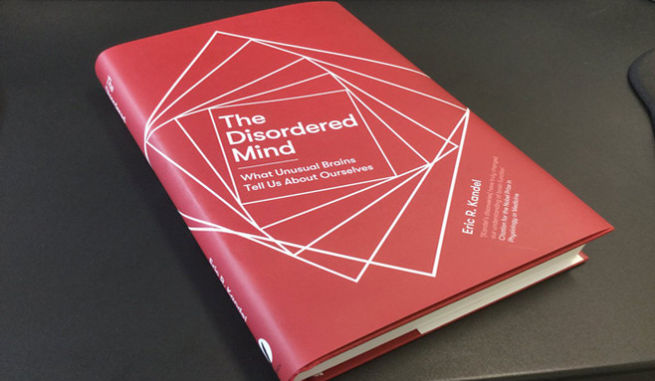
“Eric Kandel is one of the giants of 20th- and 21st-century neuroscience” ― Howard S. Kirshner, Vanderbilt University Department of Neurology
“Kandel’s clear and straightforward writing makes this informative scientific exploration accessible and compelling.” ― Library Journal
We’ve learned more about the human brain in the last two decades than in all the previous centuries combined. Brain-mapping and brain-scanning technologies are growing at an exponential rate. This, coupled with the fact that genetics is now a digital technology, means that we are gaining profound insights into how the brain works.
The Disordered Mind by the eminent Nobel-Prize winning scientist and professor, Eric Kandel, is a masterful overview of much of what we currently know about the brain and its associated disorders
Drawing on the latest research in the fields of neurology, psychology, and neuroscience, Kandel elucidates for the layperson how cutting-edge studies of brain disorders can help us gain deep insights into our understanding of thought, feeling, behaviour, memory, creativity, and even consciousness.
In the book, he tackles one of the greatest scientific challenge of all: to understand how the mysteries of human nature arise from the physical and chemical composition of the brain. To do this, he explores a wide range of brain disorders and explains what they can tell us about ourselves.
He covers a range of brain disorders and devotes a chapter for each: autism, depression, bipolar disorder, schizophrenia, dementia, Parkinson’s, Huntington’s, anxiety, post-traumatic stress disorder, addictions, gender identity, brain disorders and also tackles slippery topics such as creativity and consciousness.
We learn that different illnesses of the mind have different causes: some are caused due to inactive neurons and misfolded proteins, others are caused due to synaptic pruning and the removal of excess dendrites, and still others have genetic and chromosomal causes. Throughout, we are educated about the influence of a range of hormones and neurochemicals on human thought, emotion, and behaviour, including the big seven: acetylcholine, dopamine, gamma-aminobutyric acid (GABA), glutamate, histamine, norepinephrine, and serotonin.
We learn how damping down specific areas of the brain using transcranial magnetic stimulation can have fascinating effects on the patient. For instance, in the chapter, “Our Innate Creativity: Brain Disorders and Art”, Kandel explains how turning off the dorsolateral prefrontal cortex helps reduce inhibitions in the patient’s brain and they were able to create new music – in part because they were uninhibited and not self-conscious about being creative.
In the chapter titled, “The Pleasure Principle and Freedom of Choice: Addictions,” Kandel points out that our normal attraction to pleasure can go into overdrive, causing our brain to produce an excess of dopamine and resulting in addiction. We learn that the neurochemistry of addiction – in which dopamine plays a starring role – is the same regardless of whether it is an addiction to substances (drugs, alcohol, tobacco) or to activities (gambling, shopping, eating). Such addictions are caused when the brain’s reward system is hijacked, leading to increased concentrations of dopamine in the pleasure centres of the cortex.
In the chapter, “Sexual Differentiation of the Brain and Gender Identity,” Kandel tackles the issues of sex and gender identity. We learn that the word ‘sex’ is used in three ways to describe the biological differences between men and women. Anatomical sex refers to external genitalia and other sexual characteristics, like body hair. Gonadal sex refers to the presence of male or female gonads (the testes or ovaries). And finally, chromosomal sex refers to the distribution of the sex chromosomes in an individual. Many gender identity and sexual orientation complications are caused because these are programmed into our brain structures while we are still in the womb. “However, since sexual differentiation of the genitals takes place in the first two months of pregnancy, and sexual differentiation of the brain starts in the second half of the pregnancy, these two processes can be influenced independently, which may result in transsexuality.
In his last chapter, “Consciousness: The Great Remaining Mystery of the Brain,” Kandel doesn’t offer any startling new revelations or insights into consciousness and avers that it remains a mystery. However, he explains the key features of consciousnesses (qualitative feeling, subjectivity, and unity of experience) and emphasises that consciousness is not static and that states of consciousness vary.
Drawing on a raft of current research, and supplementing them with exploratory and thought-provoking questions, Kandel’s book is eminently readable and an intellectual treat for those who are curious to learn more about how the brain works and how it affects human consciousness and human nature.